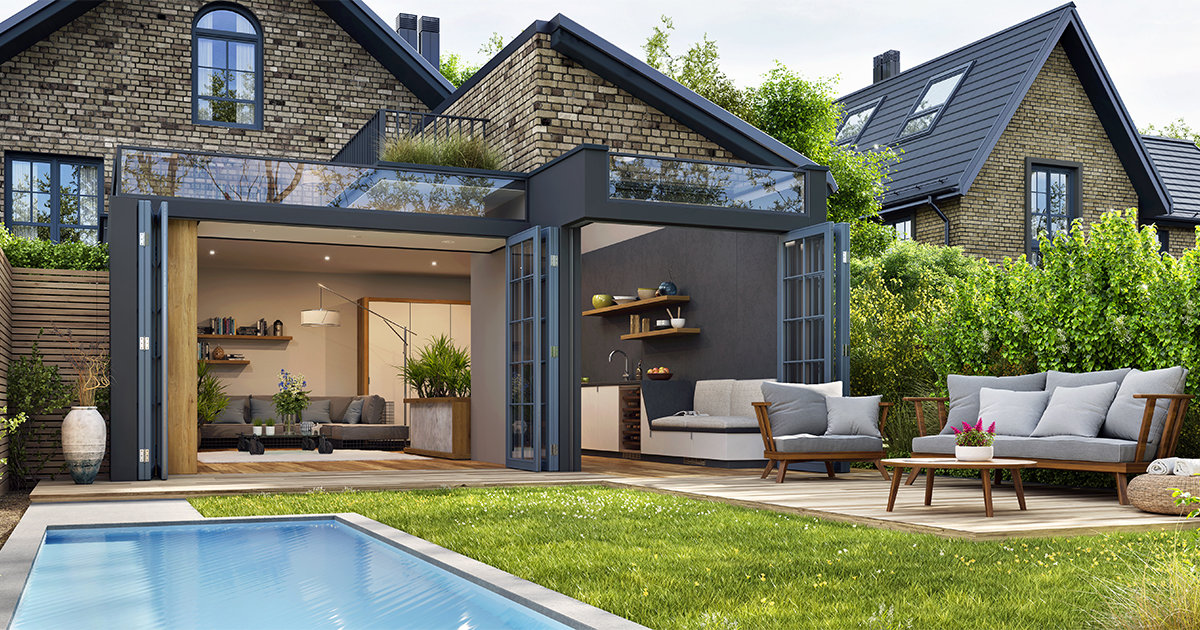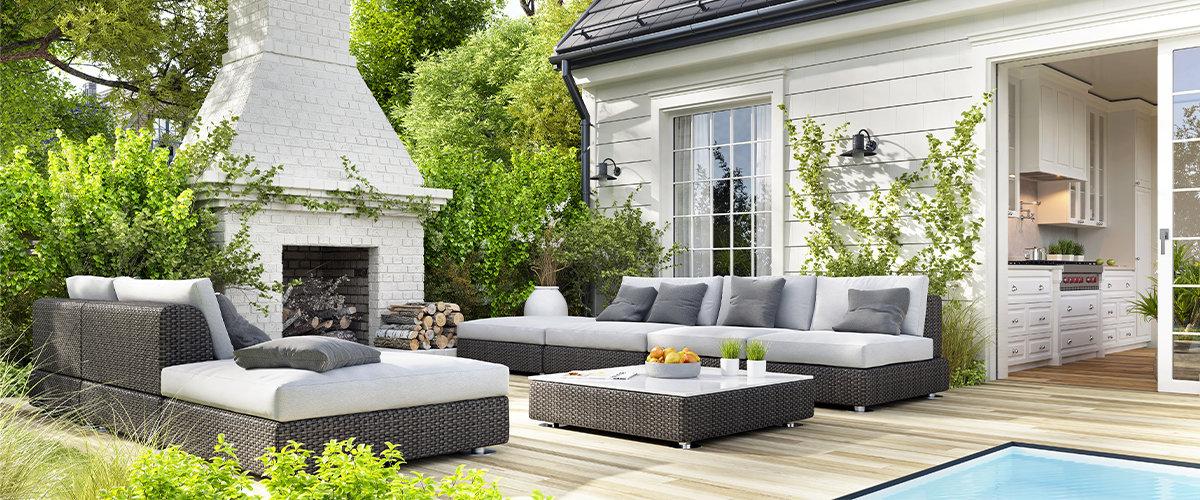
We collect basic website visitor information on this website and store it in cookies. We also utilize Google Analytics to track page view information to assist us in improving our website.
Spring Season starting to book up. Promotions Available for Winter.

It’s common for people to believe that their homes need a strict division between their indoor and outdoor spaces. What many don’t realize, however, is that you can make your home feel larger and more expansive by linking the two together. Even if it’s just with a terrace or a small outside garden, the connected exterior can give the illusion of a bigger space.
Integrating these areas in your home doesn’t have to be difficult.
Here are some tips to get you started:
Your backyard should be an inviting place you want to spend time in just by looking at it through your window.
One way to do this is to make sure you have the right furniture and the proper set-up in order to make this a possibility. Furnish your exterior space with same dedication and attention you would give to your home’s interior, and maintain a similar visual aesthetic to maintain between the two cohesiveness. Outdoor seating that’s grouped together with sofas and chairs facing at the right angle with a coffee table in the centre, and a rug to add a pop of colour, can create a functional, but visually pleasing area that will encourage family and guests alike to gather together outside.
Settling on a cohesive wood palette that merges the inside with the outside is a great way to integrate the indoors with the outdoors.

Using the same wood on the walls and floors can help meld the scenery together.
Choosing the right flooring can help connect your spaces and make them flow together more seamlessly, especially if the same material is used to transition both areas.
Be mindful of the tiles you choose, however, as they need to be able to properly stand up against all kinds of weather conditions. Opt for frost-proof options that are slip-resistant and won’t be a slip and fall hazard when wet. Pay attention to the colour of grout you choose so that there isn’t any visual interruption from room to room.
Divided flooring is also a great way to section-off specific spaces for certain activities. Paved patios can serve their purpose, but try to expand your options outside of the norm. Different floor finishes can indicate whether they’re used for backyard dining, cooking, lounging, kid’s activities, etc.
Internal courtyards, sunrooms, greenhouses – the ideas for unconventional spots in your home that connect the indoors with the outside are endless.
These suggestions offer distinct opportunities to invite more sunlight into your home and allow you to feel like you’re outdoors (without really being outdoors). Longing to bring in the natural light and looking for ways to do so can be difficult if your climate doesn’t invite that chance year-round. These alternatives give you weather-protected ways to embrace nature in your home, rain or shine.
Canopies are an excellent, and potentially cost-effective opportunity to extend your indoor space outdoors with some added protection.

Canopies can allow for protection from the elements if you choose to leave your doors open, while letting in some fresh air and sunshine. Retractable canopies are good options for unpredictable weather like wind, which could damage them, and they can be a flexible shelter solution when you don’t want to stick to something permanent.
As mentioned with flooring, it’s important to consider the materials you’re using for indoor-outdoor spaces. Weather should always factor into the choices for outdoor decor and renovations, and it is possible to be both practical and stylish with the options you choose.
Additionally, the paint colours you choose can make all of the difference in effectively connecting indoor and outdoor areas. Lean towards shades that are used inside – just make sure you’re picking paint options that are designed for outdoor use.
Your backyard doesn’t have to disappear once night falls. Illuminating your home’s outdoor space can help you appreciate and enjoy it no matter what time it is.
This is where you can be clever and plan out a lighting scheme that works best for you. Add light to paths, the edges of flowerbeds, or wash light onto fences. Adding delicate fairy lights up a tree or hung from a decorative focal point can be a very trendy and Pinterest-approved way to add to your backyard’s inviting atmosphere. Table lamps and outdoor pendant lights strung over seating and dining areas can also give your backyard and intimate and cosy feel.
Plants have seen a huge rise in popularity in recent years, and can be the perfect way to merge your house and garden together for a space-stretching visual illusion.

This could be as simple as positioning houseplants by windows – taking into account their size and foliage density that still allows light to filter inside and provide views to the outside without obstruction. Palms are a great example that work well for this. Bring garden greenery closer to the house to make the two spaces feel as if they are one. Tall planters and raised garden beds that are visible from windows are another great way to pull focus between both areas.

